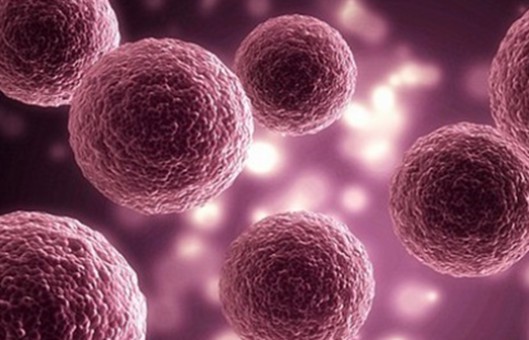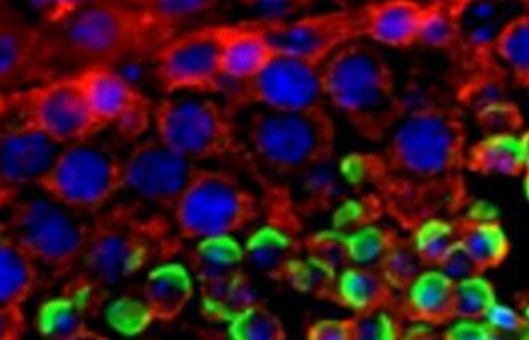Resources
-
Cell Services
- Cell Line Authentication
- Cell Surface Marker Validation Service
-
Cell Line Testing and Assays
- Toxicology Assay
- Drug-Resistant Cell Models
- Cell Viability Assays
- Cell Proliferation Assays
- Cell Migration Assays
- Soft Agar Colony Formation Assay Service
- SRB Assay
- Cell Apoptosis Assays
- Cell Cycle Assays
- Cell Angiogenesis Assays
- DNA/RNA Extraction
- Custom Cell & Tissue Lysate Service
- Cellular Phosphorylation Assays
- Stability Testing
- Sterility Testing
- Endotoxin Detection and Removal
- Phagocytosis Assays
- Cell-Based Screening and Profiling Services
- 3D-Based Services
- Custom Cell Services
- Cell-based LNP Evaluation
-
Stem Cell Research
- iPSC Generation
- iPSC Characterization
-
iPSC Differentiation
- Neural Stem Cells Differentiation Service from iPSC
- Astrocyte Differentiation Service from iPSC
- Retinal Pigment Epithelium (RPE) Differentiation Service from iPSC
- Cardiomyocyte Differentiation Service from iPSC
- T Cell, NK Cell Differentiation Service from iPSC
- Hepatocyte Differentiation Service from iPSC
- Beta Cell Differentiation Service from iPSC
- Brain Organoid Differentiation Service from iPSC
- Cardiac Organoid Differentiation Service from iPSC
- Kidney Organoid Differentiation Service from iPSC
- GABAnergic Neuron Differentiation Service from iPSC
- Undifferentiated iPSC Detection
- iPSC Gene Editing
- iPSC Expanding Service
- MSC Services
- Stem Cell Assay Development and Screening
- Cell Immortalization
-
ISH/FISH Services
- In Situ Hybridization (ISH) & RNAscope Service
- Fluorescent In Situ Hybridization
- FISH Probe Design, Synthesis and Testing Service
-
FISH Applications
- Multicolor FISH (M-FISH) Analysis
- Chromosome Analysis of ES and iPS Cells
- RNA FISH in Plant Service
- Mouse Model and PDX Analysis (FISH)
- Cell Transplantation Analysis (FISH)
- In Situ Detection of CAR-T Cells & Oncolytic Viruses
- CAR-T/CAR-NK Target Assessment Service (ISH)
- ImmunoFISH Analysis (FISH+IHC)
- Splice Variant Analysis (FISH)
- Telomere Length Analysis (Q-FISH)
- Telomere Length Analysis (qPCR assay)
- FISH Analysis of Microorganisms
- Neoplasms FISH Analysis
- CARD-FISH for Environmental Microorganisms (FISH)
- FISH Quality Control Services
- QuantiGene Plex Assay
- Circulating Tumor Cell (CTC) FISH
- mtRNA Analysis (FISH)
- In Situ Detection of Chemokines/Cytokines
- In Situ Detection of Virus
- Transgene Mapping (FISH)
- Transgene Mapping (Locus Amplification & Sequencing)
- Stable Cell Line Genetic Stability Testing
- Genetic Stability Testing (Locus Amplification & Sequencing + ddPCR)
- Clonality Analysis Service (FISH)
- Karyotyping (G-banded) Service
- Animal Chromosome Analysis (G-banded) Service
- I-FISH Service
- AAV Biodistribution Analysis (RNA ISH)
- Molecular Karyotyping (aCGH)
- Droplet Digital PCR (ddPCR) Service
- Digital ISH Image Quantification and Statistical Analysis
- SCE (Sister Chromatid Exchange) Analysis
- Biosample Services
- Histology Services
- Exosome Research Services
- In Vitro DMPK Services
-
In Vivo DMPK Services
- Pharmacokinetic and Toxicokinetic
- PK/PD Biomarker Analysis
- Bioavailability and Bioequivalence
- Bioanalytical Package
- Metabolite Profiling and Identification
- In Vivo Toxicity Study
- Mass Balance, Excretion and Expired Air Collection
- Administration Routes and Biofluid Sampling
- Quantitative Tissue Distribution
- Target Tissue Exposure
- In Vivo Blood-Brain-Barrier Assay
- Drug Toxicity Services
MTS Tetrazolium Assay Protocol
GUIDELINE
More recently developed tetrazolium reagents can be reduced by viable cells to generate formazan products that are directly soluble in cell culture medium. Tetrazolium compounds fitting this category include MTS, XTT, and the WST series. These improved tetrazolium reagents eliminate a liquid handling step during the assay procedure because a second addition of reagent to the assay plate is not needed to solubilize formazan precipitates, thus making the protocols more convenient. The negative charge of the formazan products that contribute to solubility in cell culture medium is thought to limit cell permeability of the tetrazolium. This set of tetrazolium reagents is used in combination with intermediate electron acceptor reagents such as phenazine methyl sulfate (PMS) or phenazine ethyl sulfate (PES) which can penetrate viable cells, become reduced in the cytoplasm or at the cell surface, and exit the cells where they can convert the tetrazolium to the soluble formazan product.
In general, this class of tetrazolium compounds is prepared at 1 to 2 mg/ml concentration because they are not as soluble as MTT. The type and concentration of the intermediate electron acceptor used varies among commercially available reagents and in many products the identity of the intermediate electron acceptor is not disclosed. Because of the potentially toxic nature of the intermediate electron acceptors, optimization may be advisable for different cell types and individual assay conditions. There may be a narrow range of concentrations of intermediate electron acceptors that result in optimal performance.
METHODS
Reagent preparation
- Dissolve MTS powder in DPBS to 2 mg/ml to produce a clear golden-yellow solution.
- Dissolve PES powder in MTS solution to 0.21 mg/ml.
- Adjust to pH 6.0 to 6.5 using 1N HCl.
- Filter-sterilize through a 0.2 μm filter into a sterile, light-protected container.
- Store the MTS solution containing PES protected from light at 4°C for frequent use or at -20°C for long-term storage.
Assay protocols
- Prepare cells and test compounds in 96-well plates containing a final volume of 100 µl/well. An optional set of wells can be prepared with medium only for background subtraction.
- Incubate for a desired period of exposure.
- Add 20 µl MTS solution containing PES to each well (the final concentration of MTS will be 0.33 mg/ml).
- Incubate 1 to 4 hours at 37°C.
- Record absorbance at 490 nm.
Creative Bioarray Relevant Recommendations
- Creative Bioarray provides cell proliferation assay services for our customers. We provide optional assay methods based on the cell type and protocol and the customer's preference for proliferation measurement. Additionally, we are capable of providing various options for cell viability assays and compound profiling services.
- We offer a variety of reagents for studying cell proliferation, cell viability, and cell cytotoxicity including fluorescent and non-fluorescent reporter dyes.
| Cat. No. | Product Name |
| CSK-XP0002 | SuperQuick® MTS Cell Proliferation Colorimetric Assay Kit |
| CSK-XP004 | SuperQuick® Cell Proliferation Kit I (MTT) |
NOTES
- Optimize the MTS assay by determining the appropriate incubation time and conditions to ensure accurate and reproducible results.
- Maintain consistent spectrophotometric measurements, including wavelength and path length, for accurate and reproducible absorbance readings.
RELATED PRODUCTS & SERVICES
For research use only. Not for any other purpose.



